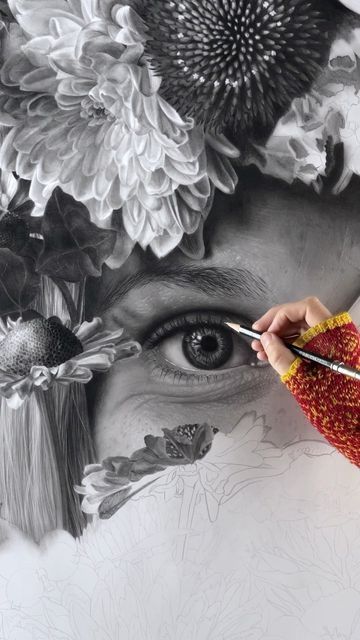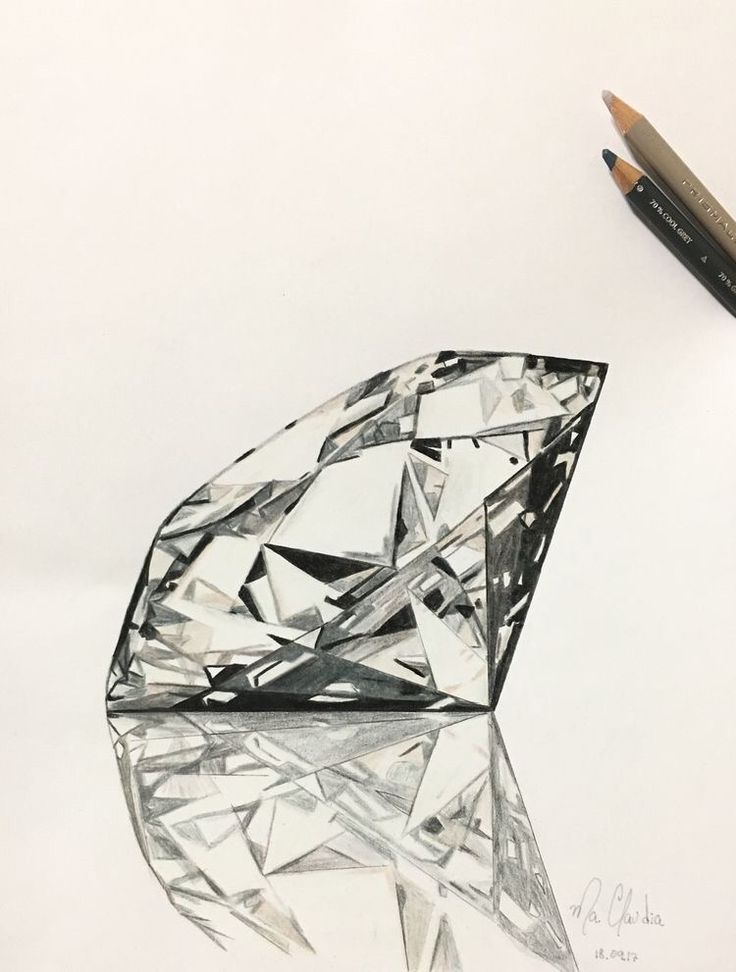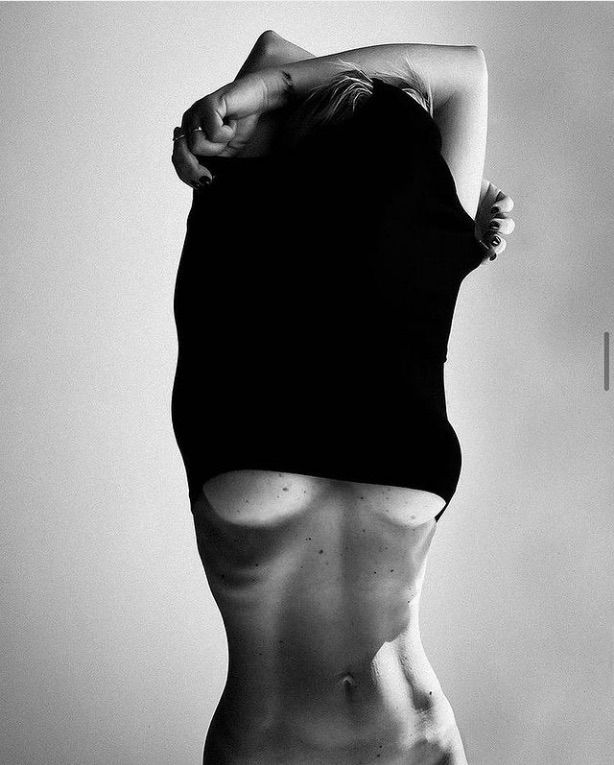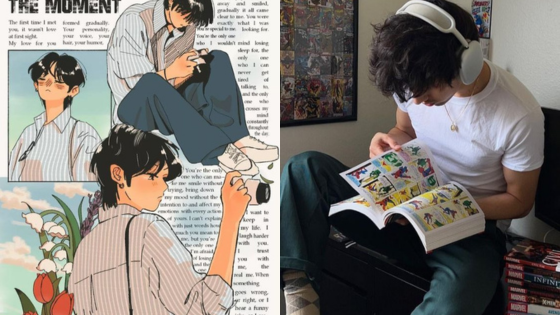Hyper-realistic drawing captivates with its astonishing attention to detail, often making artworks appear more like photographs than traditional drawings. This art form requires a deep understanding of techniques, observation skills, and the right materials to achieve striking realism. Artists in this genre dedicate countless hours to meticulous work, pushing the boundaries of conventional drawing.


Many contemporary artists have revolutionized hyper-realistic drawing by combining traditional methods with modern tools, creating stunning pieces that resonate with audiences. The journey to mastering this craft involves not just technical skill but also an intimate connection with the subject matter, allowing artists to communicate emotions through their work.
As interest in hyper-realistic drawing grows, so does the need for aspiring artists to learn effective techniques and overcome common challenges. With practice and dedication, they can transform their creative visions into compelling representations that stand out in the art world.
Key Takeaways
- Mastery of hyper-realistic drawing requires skillful observation and detail-oriented techniques.
- The use of both traditional and digital tools enhances the creative process for artists.
- Continuous practice helps overcome challenges, leading to improved artistic expression.
History of Hyper-Realistic Drawing
Hyper-realistic drawing has roots that trace back to photorealism in the late 20th century. Artists aimed to create works that appeared as real as photographs, focusing on precision and detail.
In the 1960s and 1970s, the rise of photorealism emerged primarily in the United States. Artists like Chuck Close and Robert Bechtle used meticulous techniques to achieve lifelike representations.
The term “hyper-realism” began to gain traction in the 2000s. It differentiates itself from photorealism by incorporating a sense of narrative and emotion within the hyper-detailed imagery.
Key Characteristics of Hyper-Realistic Drawing:
- Extreme Detail: Every aspect of the subject is rendered with precision.
- Narrative Elements: These works often tell a story or convey deeper themes.
- Mixed Media: Artists may combine traditional drawing techniques with digital tools.
Artists today continue to explore hyper-realistic drawing using a variety of media. Techniques such as airbrushing, colored pencils, and even 3D modeling contribute to the depth and complexity of the art form.
This approach has gained popularity in contemporary art, with exhibitions and galleries showcasing hyper-realistic works. It has expanded the boundaries of how realism can be interpreted in art.
Tools and Materials


In hyper-realistic drawing, selecting the right tools and materials significantly enhances the final output. The following sections explore key tools, including graphite pencils, charcoal, erasing tools, and suitable paper types.
Graphite Pencils
Graphite pencils are fundamental for hyper-realistic drawings. They vary in hardness, which affects the darkness and texture of the line produced.
Graphite Grading: The grading scale ranges from H (hard) to B (black), with F indicating fine point. A range of 2B to 8B is often preferred for detailed work.
Precision: Artists frequently use mechanical pencils for fine details, as they maintain a sharp point without the need for constant sharpening.
Layering: The ability to layer graphite allows for subtler gradients and depth. Artists can build up tones progressively, achieving a realistic look.
Charcoal
Charcoal presents a versatile medium for adding depth and contrast. It is especially valued for its rich blacks and soft application.
Types of Charcoal: Vine charcoal is soft and great for sketching, while compressed charcoal offers deeper blacks and more saturation.
Application Techniques: Smudging and blending techniques enhance the realistic quality of drawings. Charcoal can be used in various ways, from sharp lines to soft shadows, providing flexibility in expression.
Fixatives: To preserve charcoal artwork without smudging, artists often apply a fixative spray. This helps maintain the intended appearance.
Erasing and Blending Tools
Erasing and blending tools play a critical role in refining hyper-realistic drawings. They help in achieving smooth transitions and correcting mistakes.
Erasers: Kneaded erasers are popular for gentle lifting of graphite and charcoal without damaging the paper. Vinyl erasers offer more precision for finer details.
Blending Stumps: These are essential for smooth transitions. Made from tightly rolled paper, blending stumps help artists create soft edges and gradients.
Tortillons: Similar to blending stumps but more tapered, tortillons allow for more control in blending and detailing, crucial for hyper-realistic effects.
Paper Types
Choosing the right paper enhances the drawing experience and final result. The texture and weight influence how the medium interacts with the surface.
Weight: Heavier paper (200 gsm or above) prevents warping and allows for multiple layering of materials.
Texture: Smooth paper is ideal for fine details and pencil work, while textured paper can help with charcoal and pastel applications.
Color: White or off-white papers are commonly preferred, as they provide clarity and contrast to the drawn subject, allowing tones to stand out effectively.
Understanding the Basics


Mastering hyper-realistic drawing requires a solid grasp of several foundational elements, including proportions, values, textures, and the interplay of light and shadow. These components are crucial for achieving lifelike representations.
Proportions and Measurements
Proportions are the backbone of accurate drawing. An artist should develop a keen eye for the relationship between different parts of the subject.
Using references is essential. It helps in understanding how to measure distances accurately. Techniques like the grid method or using a proportional divider can aid in maintaining scale.
Regular practice with measuring tools will train the eye to spot discrepancies. Employing comparative measuring techniques ensures that each element aligns correctly, leading to a balanced composition.
Value and Tone
Value refers to the lightness or darkness of a color, which is vital in creating depth. A full range of values can transform a flat drawing into a three-dimensional representation.
Artists should practice shading techniques like hatching, cross-hatching, and blending to establish tone. Working with a limited color palette can help focus on values rather than hues.
It is beneficial to observe real-life objects under different lighting conditions. This observation helps in understanding how light affects the perceived value of surfaces, which is critical for creating depth.
Texture Creation
Texture adds realism to hyper-realistic drawings. Different surfaces require different techniques to portray effectively.
For example, smooth surfaces may necessitate blending techniques, while rough textures can be achieved through various mark-making methods.
Artists often use tools like tortillons or brushes to manipulate graphite or charcoal, enhancing the illusion of texture. Experimentation with different materials and tools can lead to unique results in texture representation.
Light and Shadow
Light and shadow play a significant role in creating dimension. Understanding how light interacts with forms is crucial for producing realistic imagery.
Artists should study the effects of direct and ambient light. Creating a light source in the drawing helps in establishing proper shadow placements.
Techniques like chiaroscuro, which contrasts light and dark, can create a dramatic impact. Observational practice is important, as it allows the artist to understand how light shapes the subject and informs the overall composition.
Techniques in Hyper-Realistic Drawing


Hyper-realistic drawing requires a variety of techniques to achieve lifelike results. Mastering these methods allows artists to create depth, texture, and realism in their work.
Layering
Layering is essential in hyper-realistic drawing. It involves applying multiple layers of pencil or other media to build depth and detail.
Artists often begin with light, initial sketches to establish shapes. Gradually, they add darker shades and finer details.
This technique allows for a smoother transition between light and shadow. It enhances tonal variation, creating a more three-dimensional appearance.
Layering can also help to correct mistakes. If an area needs adjustment, the artist can add or remove layers as needed.
Blending
Blending creates a soft transition between colors and tones. This technique helps to simulate realistic skin textures, shadows, and highlights.
Artists typically use tools such as blending stumps, tortillons, or even fingers to achieve this effect.
The goal is to eliminate harsh lines while still maintaining contrast. Well-blended areas evoke a sense of realism that draws viewers in.
It’s crucial to practice blending with various mediums, such as graphite and colored pencils. Each medium responds differently, influencing the final outcome.
Hatching and Cross-Hatching
Hatching and cross-hatching are techniques that involve creating lines to represent shadows and texture.
Hatching consists of drawing parallel lines closely together. The density and angle of the lines determine the darkness of the shadow.
Cross-hatching adds another layer of lines in a different direction. This technique builds depth and complexity in areas of extreme shadow or texture.
These methods require precision and control, making them fundamental for hyper-realistic artists. They enable the artist to depict intricate details effectively.
Glazing
Glazing is the application of thin layers of color over a dry base layer. This technique is particularly useful in colored pencil work.
By applying multiple transparent layers, artists can achieve a vibrant color depth that is hard to replicate with a single application.
Each subsequent layer adds complexity and richness to the artwork.
It’s important to allow each glaze to dry completely before adding the next layer. This patience contributes to the overall realism of the piece.
Using glazing strategically allows artists to highlight specific areas while preserving underlying details.
The Step-by-Step Process


Creating a hyper-realistic drawing involves several key steps that require attention to detail and patience.
Select a Reference Image
Choosing a high-quality image is crucial. It should have good lighting and detail.Gather Materials
Standard materials include pencils, erasers, blending tools, and high-quality paper. Optional tools can include colored pencils and charcoal.Sketch the Outline
Lightly sketch the basic shapes and outlines. Focus on proportions and angles without pressing too hard to allow for adjustments.Build Up Layers
Begin shading gradually. Use different pencil grades to create depth. Layering enhances realism.Blend and Refine
Use blending tools to smooth transitions between shades. Pay attention to textures in the reference image.Add Details
Focus on the finer details, such as highlights and textures. Use a sharpened pencil for precision.Final Touches
Evaluate the drawing from a distance. Make any final adjustments to achieve the desired realism. Use an eraser for highlights as needed.
This methodical approach helps an artist achieve accuracy and depth in their hyper-realistic drawings. Consistent practice is essential for mastering these techniques.
Improving Observation Skills


Enhancing observation skills is crucial for creating hyper-realistic drawings. This process involves a combination of analyzing reference images and engaging in live drawing exercises, both of which sharpen a person’s ability to notice fine details.
Reference Image Analysis
Analyzing reference images is fundamental for developing keen observation skills. Artists should select high-quality images that provide clarity and detail.
Key points to focus on include:
- Light and Shadow: Observe how light interacts with objects. Identifying the direction of light helps in understanding shadow placement.
- Texture: Note the various textures present. Studying these can aid in replicating similar effects onto paper.
- Proportions: Measure key elements within the image. Using tools such as a grid or pencil can maintain accurate proportions.
Breaking down an image into basic shapes can simplify complex subjects, making it easier to replicate.
Live Drawing Exercises
Engaging in live drawing exercises enhances real-time observation skills. This technique helps artists adapt to varying visual stimuli and improve their responsiveness.
To maximize benefits from live drawing, consider the following:
- Practice Gesture Drawing: Quick sketches of live models capture movement and basic anatomy. Setting a timer for short intervals promotes spontaneity.
- Focus on Negative Space: Instead of only drawing the object, artists should pay attention to the spaces around it. This method helps in understanding shapes and forms.
- Regular Sketching: Consistency is key. Daily sketching trains the eye to notice details and improves hand-eye coordination.
Incorporating these exercises into a routine reinforces an artist’s ability to observe and portray reality accurately.
Common Challenges and Solutions


Creating hyper-realistic drawings involves various challenges that artists face. Addressing these obstacles effectively can enhance their skills and the quality of their work.
Avoiding Smudging
Smudging is a common issue when working with pencils or charcoal. To prevent this, artists can use a few techniques:
- Utilize a Blending Tool: A tortillon or blending stump helps to smooth out areas without smudging nearby parts.
- Work from Light to Dark: Start with lighter shades and gradually add darker ones. This technique minimizes the risk of smudging previously applied layers.
- Protect the Surface: Placing a clean sheet of paper under the drawing hand keeps oils from fingers or dust from transferring onto the artwork.
These methods are practical for maintaining clean lines and enhancing detail.
Achieving Fine Details
Fine details are crucial for hyper-realism. Artists can enhance their approach through the following strategies:
- Use High-Quality Materials: Invest in fine pencils or markers that allow for precision.
- Reference Images: Study photographs or real-life objects closely to replicate textures accurately.
- Practice Techniques: Techniques such as stippling or hatching support the creation of intricate details.
Continuously refining these skills leads to increased accuracy and a polished final piece.
Maintaining Consistent Lighting
Lighting consistency impacts the overall realism of the artwork. Artists can ensure coherence by:
- Establishing a Light Source: Decide on a primary light source before starting the drawing. This decision guides shadow placement and highlights.
- Use Value Studies: Performing a value study helps in understanding how light affects different surfaces and can serve as a guide throughout the drawing process.
- Monitor Shadows: Observing how shadows fall and change as the light source shifts helps maintain uniformity.
These approaches support a cohesive lighting structure that adds depth.
Overworking the Drawing
Overworking can lead to a loss of vitality in the artwork. Avoiding this issue requires vigilance:
- Take Breaks: Stepping away can provide a fresh perspective, allowing the artist to assess whether further work is necessary.
- Know When to Stop: Recognize the difference between refining the piece and over-tinkering. Setting milestones can help in assessing progress objectively.
- Limit Number of Layers: Being mindful of the number of layers applied prevents the drawing from becoming muddy or losing detail.
By managing these aspects, artists can maintain the integrity and clarity of their hyper-realistic drawings.
Advanced Techniques


Employing advanced techniques in hyper-realistic drawing can significantly enhance the realism and depth of artwork. These methods include mixed media usage, the strategic incorporation of color, and the application of perspective and depth.
Mixed Media Usage
Mixed media can add texture and dimension to hyper-realistic drawings. Artists often combine traditional pencil techniques with materials like markers, watercolor, or pastels.
- Pencil and Ink: Blending graphite with ink can provide sharp details alongside soft gradients.
- Watercolor Washes: Applying watercolors can create subtle shadows and highlights, enriching the visual impact.
This technique allows for unique textural contrasts, making objects more lifelike. Proper layering is essential; artists should add lighter media over darker ones to maintain control over the final appearance.
Incorporating Color
Color plays a crucial role in hyper-realistic drawing. Understanding how to blend colors accurately is vital for achieving realistic skin tones, natural landscapes, or objects.
- Layering Colors: Building up colors in layers helps create depth. Starting with a base layer and gradually adding more tones enhances realism.
- Color Theory: Utilizing complementary colors can produce a vibrant look, while analogous colors offer subtle harmony.
Artists should also focus on how light interacts with surfaces. Observing real-life objects under different lighting conditions can guide effective color choices.
Perspective and Depth
Mastering perspective and depth is essential to create a three-dimensional appearance. A strong sense of perspective can dramatically affect the overall composition.
- Linear Perspective: Utilizing vanishing points helps in accurately depicting space. This technique is fundamental for depicting structures or landscapes.
- Atmospheric Perspective: This involves adjusting color and clarity based on distance, making distant objects appear lighter and less detailed.
By integrating these principles, artists can create drawings that draw viewers into the scene, enhancing the immersive experience.
Presentation and Preservation


Effective presentation and preservation are crucial for hyper-realistic drawings. Proper methods ensure that the artwork retains its quality and can be appreciated by future generations.
Framing and Displaying
Framing plays a vital role in showcasing hyper-realistic drawings. It is essential to use high-quality materials such as acid-free mats and UV-protective glass to prevent fading and deterioration. The choice of frame can significantly influence the artwork’s aesthetic, so selecting a style that complements the drawing is important.
When displaying, consider using proper lighting to enhance the details without causing glare. The location should have stable temperature and humidity levels. Keeping the artwork away from direct sunlight protects it from environmental damage. Regular dusting with a soft cloth helps maintain its clarity.
Archival Storage Methods
For artworks not on display, archival storage methods are necessary. Use acid-free folders or sleeves to protect drawings from dust, moisture, and physical damage. Storing pieces flat in a climate-controlled room can help prevent warping and deterioration over time.
It is advisable to use archival boxes made from acid-free materials for long-term storage. Additionally, avoiding exposure to high humidity and extreme temperatures preserves the integrity of the drawings. Regularly checking stored artworks for any signs of damage can prevent serious deterioration.
The Role of Digital Tools in Hyper-Realistic Drawing
Digital tools have transformed hyper-realistic drawing, providing artists with advanced techniques and resources. Software like Adobe Photoshop and Corel Painter allows for detailed work while mimicking traditional media.
Key Benefits of Digital Tools:
- Precision: Digital brushes can be customized for fine details.
- Layering: Artists can use layers to separate elements, improving the editing process.
- Revisions: Making changes is easier and non-destructive compared to traditional methods.
Tablets, such as Wacom or iPad Pro, equipped with pressure-sensitive styluses facilitate a natural drawing experience. They enable sensitive line variation akin to using a pencil on paper.
Common Digital Techniques:
- Blending: Digital tools offer smooth transitions between colors and textures.
- Texturing: Artists can apply realistic textures using various brush styles.
- Lighting Effects: Digital manipulation helps achieve accurate lighting and shadowing.
Artists often combine traditional techniques with digital tools for depth and realism. Scanning traditional sketches into digital platforms allows for enhancement and refinement.
Digital tools have democratized hyper-realistic drawing, enabling more artists to experiment and perfect their craft. The accessibility of resources fosters innovation in this art form.
Contemporary Hyper-Realistic Artists


Contemporary hyper-realistic artists are known for their exceptional skill and attention to detail. They create artworks that resemble high-resolution photographs, focusing on realism and precision.
Notable artists include:
Chuck Close: Famous for his large-scale portraits made from a grid system. Close employs a unique approach to color and texture.
Ron Mueck: Known for his hyper-realistic sculptures. His figures often play with scale and provoke an emotional response.
Bert Monroy: A pioneer in digital painting, Monroy uses tools like Adobe Illustrator to create intricate landscapes and portraits.
Eve Arnold: Celebrated for her photographic portraits that capture the essence of her subjects with striking clarity.
These artists push the boundaries of realism by experimenting with different mediums and techniques. Each artist brings a unique perspective to the genre, often blending various styles and themes.
Techniques and mediums often used:
- Oil painting
- Pencil drawing
- Digital art
- Sculpture
The impact of these artists extends beyond their individual works. They inspire a new generation to explore realism and enhance their technical skills. Hyper-realism continues to evolve, reflecting contemporary society’s complexities and nuances.
Drawing as a Profession
For those pursuing drawing as a career, building a strong portfolio, exhibiting work, and effective selling and marketing are essential steps. Each aspect requires focused effort and skill to succeed.
Building a Portfolio
A well-curated portfolio is crucial for any artist. It should showcase a range of work, from hyper-realistic drawings to other styles. This demonstrates versatility and skill.
Artists should select pieces that reflect their best work and personal style. Ideally, a portfolio should include:
- 10-20 finished pieces
- Sketches that highlight the creative process
- Any collaborative projects
Digital portfolios are increasingly popular, allowing artists to share their work online easily. Websites and social media platforms can enhance visibility and attract potential clients.
Exhibiting Work
Exhibiting artwork provides invaluable exposure. Local galleries, art fairs, and community events often welcome emerging artists. Securing a spot in these venues builds credibility.
Artists should consider:
- Preparing professional presentations for exhibitions
- Networking with other artists and professionals
- Seeking opportunities in art competitions
Engaging with audiences during exhibitions can help artists receive feedback and create connections that may lead to collaborations or commissions.
Selling and Marketing
Marketing strategies play a key role in selling artwork. Artists need to identify their target audience and craft tailored approaches.
Key marketing tactics include:
- Setting up an online store or utilizing platforms like Etsy
- Leveraging social media for promotions
- Attending art shows for visibility
Pricing artwork requires careful consideration of factors like materials, time, and market trends. Consistent branding and professional presentation further enhance an artist’s marketability and can lead to steady sales.
- 1.7Kshares
- Facebook0
- Pinterest1.7K
- Twitter0


